
Off-Grid Camping, Utilizing Truck Bed Campers Is Growing in Popularity with RVers
Mid-size and 1/2-ton pickups are immensely popular with outdoor enthusiasts. Especially among the burgeoning overlanding crowd who love the year-round exploration of less traveled roads. If you are reading this, you’re likely one of those pickup owners and know it’s more comfortable sleeping in a truck bed camper than a tent.
There are dozens of truck bed camper manufacturers for smaller pickups, varying in type, size, shape, and weight. Some are hard-sided campers, such as Lance Campers, NuCamp RV, and Kimbo. In contrast, others are hybrids such as Four Wheel Campers, Alu-Cab, and Outfitter Manufacturing. Hybrids feature some cool combinations of a traditional camper and a pop-up tent system.
But far more important than the model of truck bed camper you choose is how you set up your mid-size or ½-ton pickup to carry the added weight of the camper and everything that goes with it when you head out on a camping trip.
Pickup Camper Weight Importance
A camper adds both weight to the bed and raises the pickup’s center of gravity. Bothof which affects the pickup’s ride and handling. The heavier the camper, the more the pickup’s rear suspension is compressed and tasked with controlling the added weight.
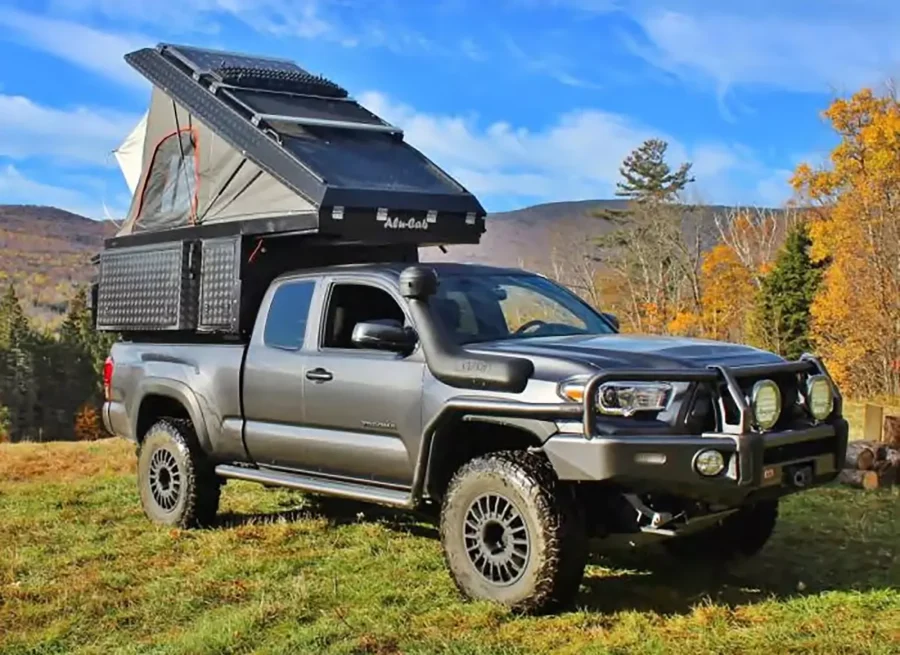
That’s why it’s important to know both the camper’s weight and the pickup’s factory weight limitations for both cargo capacity, the pickup’s Gross Vehicle Weight Rating (GVWR), and axle load capacities (Gross Axle Weight Rating) when matching any camper for your particular pickup.
Factory pickup shocks and springs work well for the occasional load of wood or carrying an ATV. But they can be less than optimal at providing a good ride and handling when carrying the added weight of a camper.
So it’s important to know both the empty and loaded weight of the camper you are considering purchasing and how that weight compares to the maximum cargo capacity of your specific make/model pickup. This applies to all pickups.
Pickup Center of Gravity

The same applies to your suspension handling the higher center of gravity that occurs when a pickup camper is installed. The taller and heavier the load, the more the pickup will lean in corners and off-camber sections of the road. The higher the center of gravity, the more the chances of a rollover when cornering or making an emergency lane change.
This is an important enough concern that the National Highway Traffic Safety Administration (NHTSA) requires all pickup manufacturers to provide specific guidelines on camper loading. These manufacturer guidelines typically show how to figure the center of gravity and give added tips on camper installation.
Some Mid-size Pickups are Not Designed For Camper Use
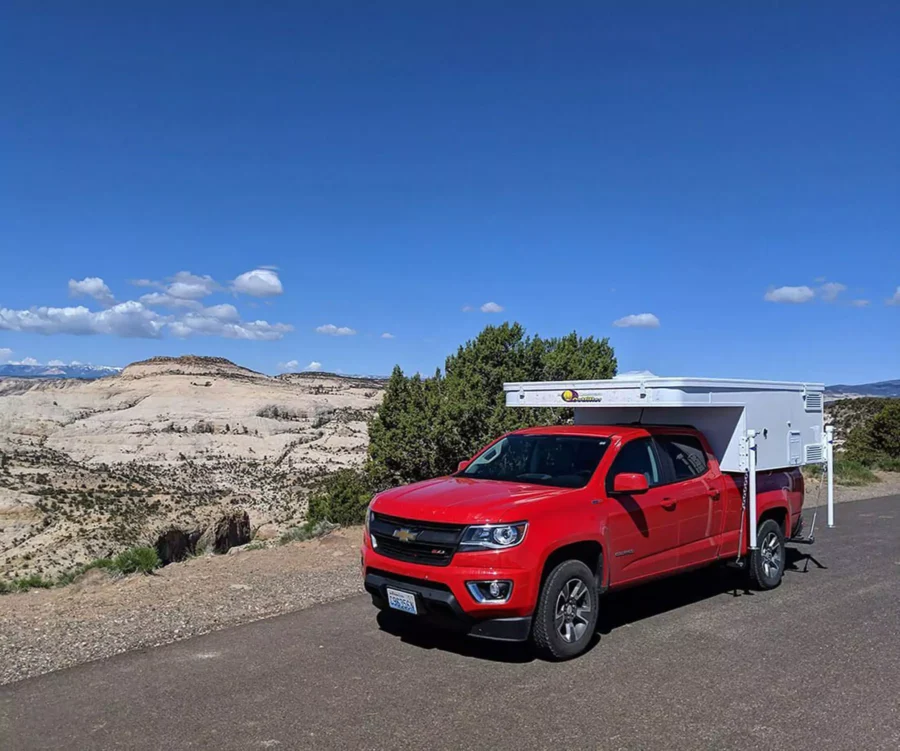
While nearly all ½-ton pickups are camper-certified when following the manufacturer’s guidelines, several popular mid-size pickups are not. GM’s Chevrolet Canyon and Ford’s Ranger are two such pickups.
In the 2021 GM Colorado/Canyon mid-size pickup owner’s manuals, under the heading “Truck-Camper Loading Information” on page 184, there’s a warning box that states: “Adding a slide-in camper or similar equipment to the vehicle can damage it, and the vehicle warranty would not cover the repairs. Do not install a slide-in camper or similar equipment on the vehicle.”
According to Pickuptrucktalk.com, Chris Bonelli, Chevy Design, Product and Brand Communications, explained at the time the Colorado [and GMC Canyon] were developed, “No one made a slide-in camper that was designed to fit. Because of this, we didn’t design or test the architecture for that specific accessory condition.” GM still hasn’t approved any camper use on their mid-size pickups.
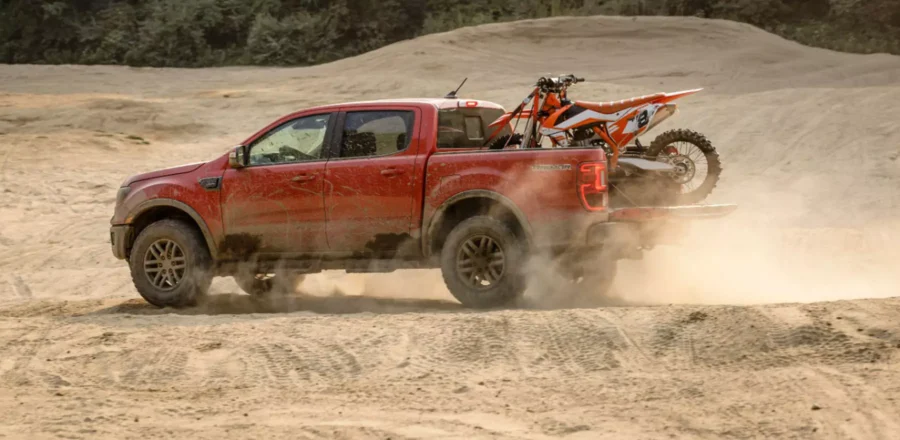
Ford Rangers Aren’t Designed For TheM Either
GM isn’t alone in that regard. Ford has a similar notice in the Ranger mid-size pickups. Their owner’s manual states: “We do not recommend using your pickup for carrying a slide-in camper.”
Toyota Embraces The truck bed camper
On the other hand, Toyota embraces such use and goes into great detail in the corporate trailer towing guide on how to match a slide-in and other campers to the various models of mid-size Tacomas and full-size Tundras. Great information that’s nicely explained and illustrated.
Mid-size pickups generally have the cargo capacity to carry the load of many campers and camper hybrids on the market. But that doesn’t mean your mid-size pickup has been tested and approved by the vehicle’s manufacturer with such a load in the bed. Equipping a pickup not approved for such use could result in a voided vehicle warranty and your insurance company denying related vehicle repairs.
That’s why it’s very important to check your pickup’s owner’s manual before installing a camper (or camper-like) piece of equipment.
Suspension Upgrades For Carrying A Pickup Camper

If you want to make your ½-ton or mid-size pickup ride and handle better with a camper in the bed, you can install several items to make that happen. The heavier the load in the bed, the more important these suspension upgrades.
Note, however, no addition of any suspension-related parts increases the pickup’s payload capacity, GVWR (Gross Vehicle Weight Rating), GAWR (Gross Axle Weight Rating), trailer tow rating, or any other factory-set capacity of the pickup.
Sway Bars Improve Camper-Carrying Pickup Handling

The first item you can upgrade to help reduce the effects of the higher center of gravity is replacing the OEM rear sway (anti-roll) bar with a more robust aftermarket version. Hellwig, Roadmaster, Stage 3 Motorsports, and other aftermarket manufacturers offer a variety of such products.
A sway bar is a special round bar-type spring that mounts side-to-side to the pickup frame behind the rear axle housing. On some pickups, there’s also one mounted up front in much the same manner.
“Sway bars are among the most cost-effective and dramatic improvements you can make to your vehicle,” says Hellwig’s Kevin Parriera. “Sway bars are easy to install, making them a great first upgrade for anyone who wants a little more control out of their ride.”

A sway bar resists the downward push/upward pull of the suspension and chassis as the pickup leans around a corner or through an off-camber dip in the road or trail. The larger the diameter of the sway bar, the greater its ability to keep the pickup level when cornering and reduce swaying. Aftermarket sway bars are larger in diameter than the OEM ones they replace.
Air-Bags For Smaller Camper-Laden Pickups
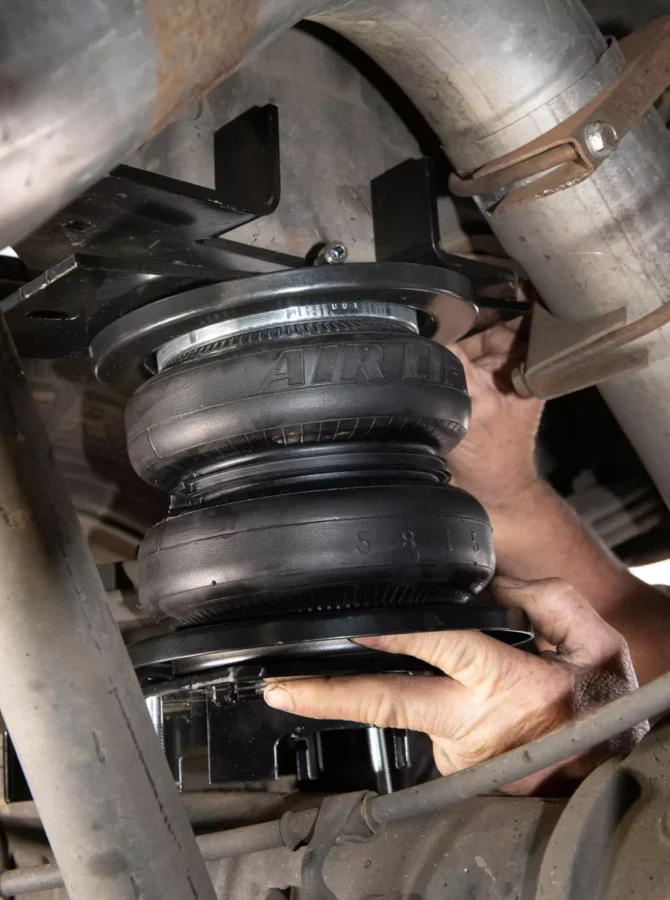
Another upgrade that helps improve pickup handling by better distributing the load of a slide-in camper, or heavier bed topper with roof-top-tent, is the addition of air-helper springs (air bags.) Air helper springs help level the pickup’s rear by sharing some of the load on the rear springs.
These air springs, mounted inside rear coils or externally atop the axle housing, use compressed air to adjust them individually (side to side), together, or automatically depending on the manufacturer and setup. They require a more elaborate installation than the typical DIYer is willing to tackle, so a dealer or specialty shop usually installs the kits.
Manufacturers such as Firestone Ride-Rite, Hellwig, and Air Lift Company offer a wide variety of ½-ton and mid-size pickup systems. Such kits are readily available from retailers such as Camping World, etrailer.com, 4wheelparts.com, and even Walmart and Amazon.
Overload Springs For Camper-laden Pickups
Another option to help lift and level the rear of a pickup with leaf springs is installing a set of overload springs. These are sometimes known, as “add-a-leafs,” depending on where they are installed.
These are spring leafs that you either attach to the top of the existing rear leaf spring pack (helper springs) or insert into the leaf spring pack (add-a-leaf) to provide additional load support.
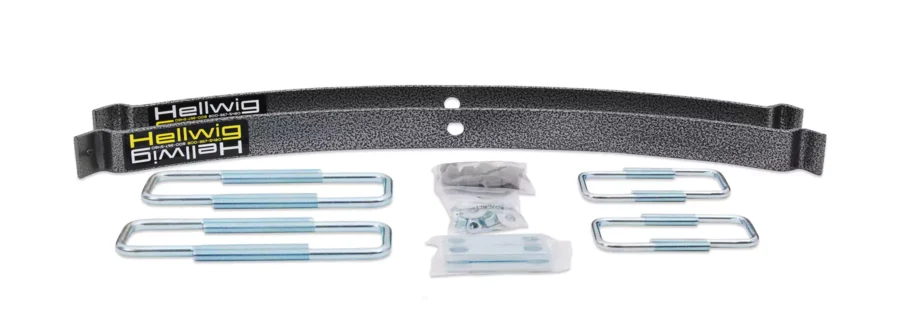
There are many variations of these helper-type springs on the market. I favor those from Hellwig Products. They have great adjustability as to when they kick in to support the load. This design allows for a decently smooth ride while unloaded, especially on Toyotas.
Overload springs are a good choice if the camper will be in the bed most of the time. Add-a-leaf versions are probably not the best for smaller (1/2-ton and mid-size) pickups because they tend to make the ride stiff when unloaded. If you’ll use the pickup for both daily commuting and overlanding, air-helper springs are a better choice.
Shocks For Smaller Camper-Carrying Pickups
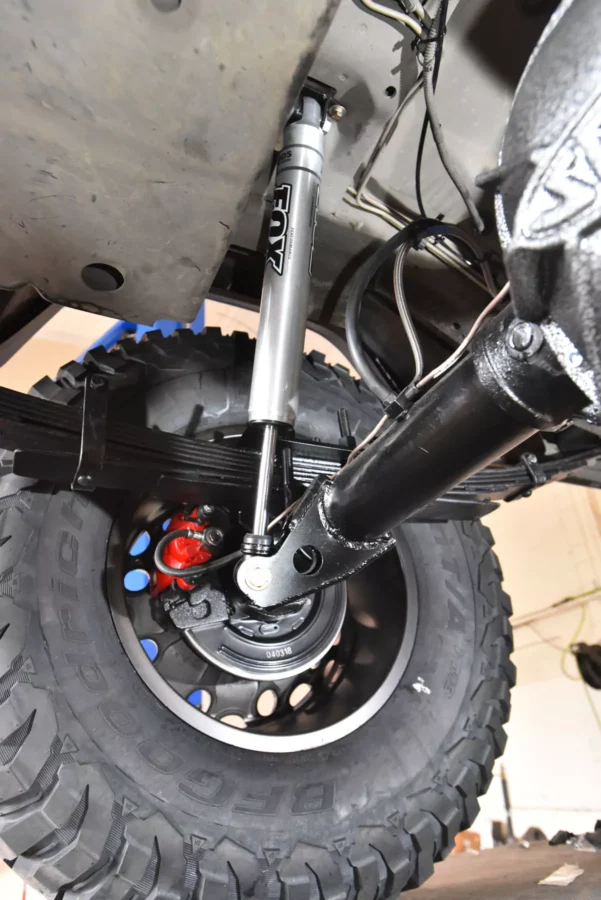
When the pickup’s suspension moves, the shocks slow that rapid rebound/compression cycle when the spring is loaded or unloaded. The higher the quality and design of the shock, the greater the smooth control of the spring’s natural tendency to rebound to its resting state.
Shocks play a big part in a vehicle’s ride and handling. The more weight in the pickup bed, the softer and mushier the ride with the factory shocks. Upgrading a ½-ton or mid-size pickup’s shocks to a higher quality, monotube, high-pressure gas shocks such as Fox 2.0, Bilstein, Skyjacker, Monroe, and others, can help smooth out the ride and handling with a camper in the bed.
(There’s no need to expend the money on “remote-reservoir” shocks unless you are serious about trekking off-road at speed. A high-quality, well-designed monotube shock is all you need.)
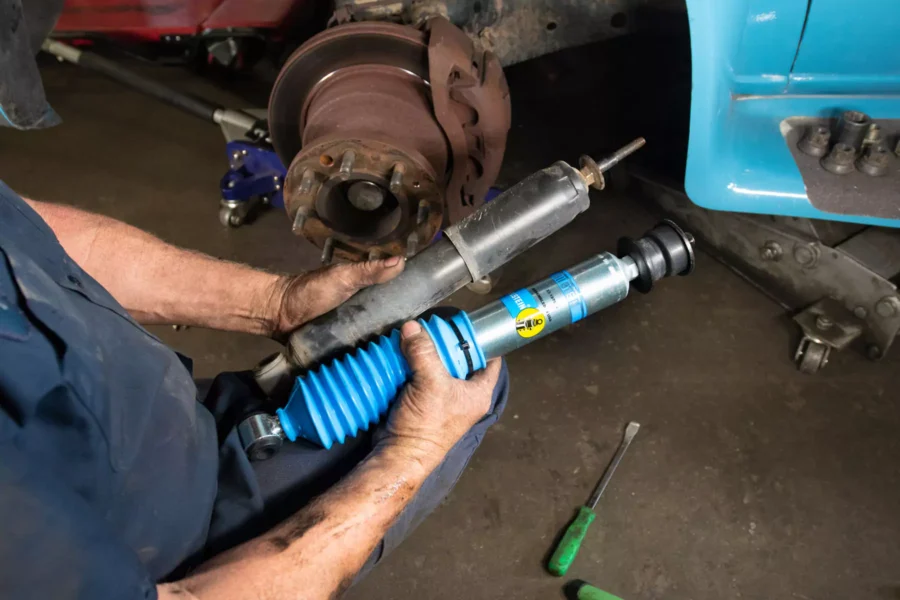
New shocks will also significantly improve the handling on pickups that have more than 60,000 miles on the OEM shocks. All shocks, like tires, wear out and need to be replaced over time. A shock upgrade is a must if your pickup is older with higher (60K-plus) mileage and still running factory shocks.
Ready To Hit The Road/Trail?
With upgrades like the addition of a rear anti-sway bar, airbags or overload springs, and new shocks, a ½-ton or mid-size pickup with a truck bed camper will ride and handle much like it does without the load in the bed. That sense of driving comfort and security is what you want when headed out on a camping trip.





I have a Ram 1500 V8 Hemi.
It came with a large war ing sticker saying vehicle not designed to have a a camper installed in or on the bed of the truck.
With only 1400 cargo capacity, I can see why.